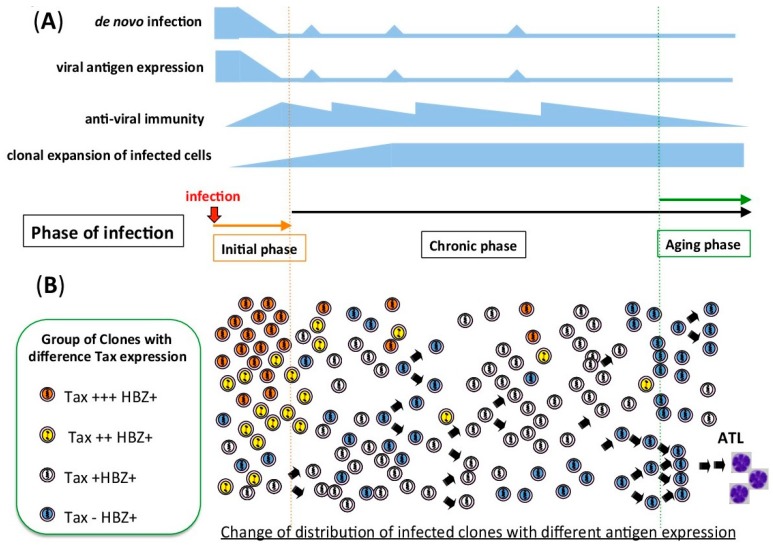Figure 1.
Schematic figure of Human T-cell leukemia virus type 1 (HTLV-1) infection from the initial to the chronic phase of infection. (A) During the initial phase of infection, before an anti-virus immunity has been established, de novo infection should be more dominant than the clonal expansion of infected cells. In the chronic phase of infection, antiviral immunity removes infected cells with high viral antigen expression. HTLV-1 increases the viral copy number by clonal expansion of the infected cells. There is sporadic viral antigen expression, which should maintain the activity of the anti-viral immunity. (B) Change in the distribution of infected clones with different antigen expression. In the initial phase, the proportion of infected clones with high Tax expression is high, because there is little anti-viral immunity. After the establishment of an anti-viral immunity, clones with high antigen expression are eliminated by the host immune system.

